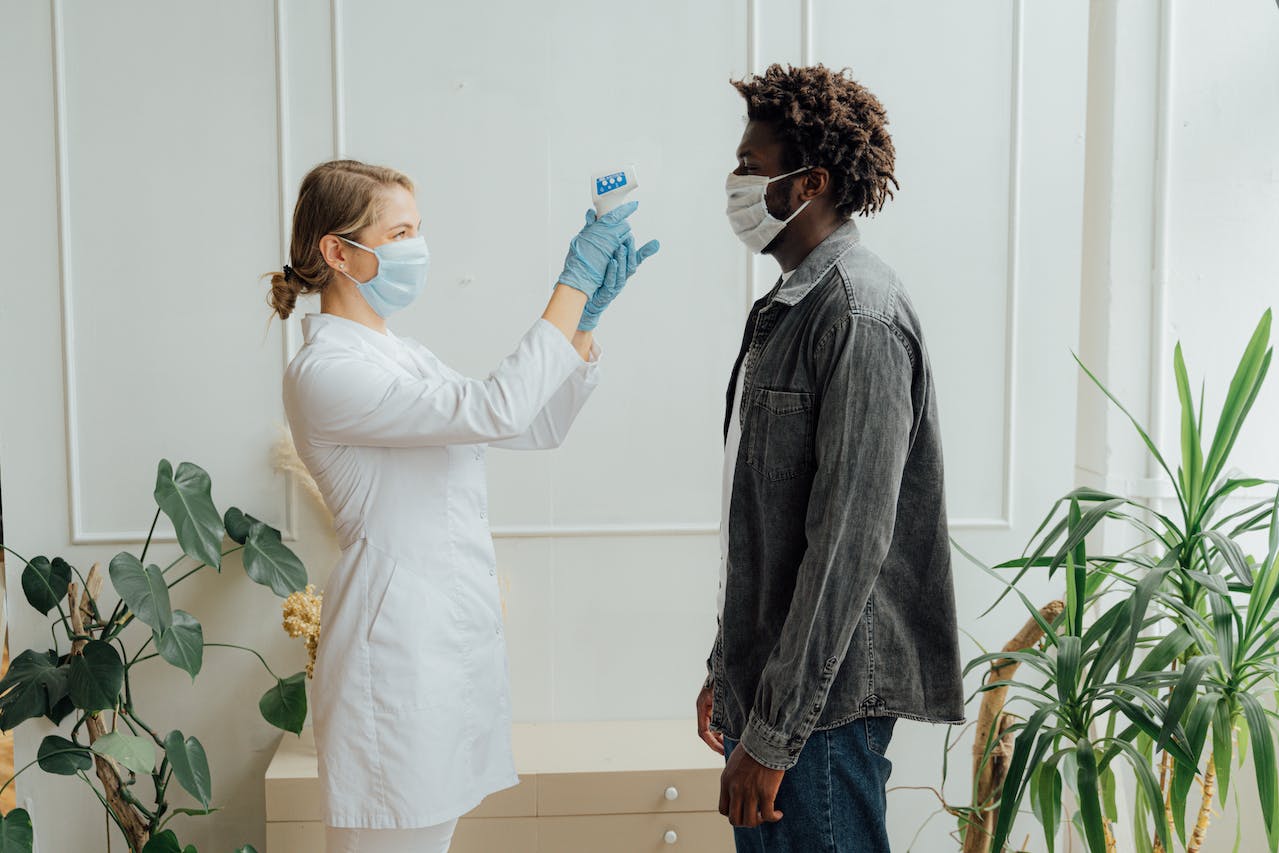Comments
- No comments found

Family nurse practitioners (FNPs) are a crucial element of the United States health system.
Without their effective and comprehensive care, millions of people would lack access to qualified primary care as well as more specialized nurse practitioner niches. One of the areas where FNPs have a large amount of influence is on patients’ environmental health. They use a number of means to assess their patients’ environmental concerns and devise treatment plans designed to work around them and help the patient recover and live a happy and healthy life. In this article, we’ll explore the ways FNPs are involved in assessing and addressing the impact of environmental factors on the health of individuals and families.
Before we dive in, however, let’s take a look at what “environmental health” really means.

According to the Office of Disease Prevention and Health Promotion (ODPHP), roughly 12 million people across the globe die each year because they work or live in unhealthy environments. This includes harmful pollutants in water, soil, air, materials, and food in workplaces and homes. People struggling with exposure to these issues might suffer from health problems such as cancer, heart disease, and respiratory diseases, among many others. Pregnant women and children are more likely to develop health problems associated with pollution.
Environmental health refers to more than just pollution. When you hear the words “environmental health”, you might assume the term refers to the larger environment such as nature or the climate. While that certainly plays a big part in this field of health (as briefly described above), there are actually three main components that we’ll discuss in this article:
Home
Social
Out-of-home environment
Your in-home environment is an important part of environmental health and refers to your home environment, including whether your home is safe, clean, and stress-free. Your social environment refers to your relationships and interactions with other people, and your external environment refers to the outdoor environment itself.
Before we explore all three of these in more detail, however, let’s take a look at a more “official” definition of environmental health. According to the American Public Health Association (APHA), environmental health is a branch of public health concerned with the relationships between people and all of the environments they interact with as well as the health and safety of communities. It is concerned primarily with promoting human well-being and overall health.
The first environment we’ll look at right now is your home environment. Your home environment refers to a few different things. First, is your home clean and safe? This is especially important when assessing the viability of home treatment for elderly individuals, but is a factor for other patients, too. In this situation, good environmental health refers to having a safe and clean home that you feel good in. If you are stressed or frustrated while at home, for any reason, it might not be a good place to recover from illness.
Social health, which refers to the relationships between people, is its own area of study. As it pertains to environmental health, specifically, your social environment includes the people you interact with on a daily basis, including at home. Professionals assessing this aspect of your environmental health are most concerned with whether you are constantly under stress or frustration and might benefit from in-facility care instead of being released to go home.
Your out-of-home environment refers to the larger environment around you. Living near highly polluting factories or other facilities, for example, can have a significant negative impact on your environment. This element of environmental health looks at risk factors in your out-of-home environment and whether they have the potential to negatively affect your health.
Each of these categories is just as important as the other when it comes to environmental health. In the next sections, we’ll explore how FNPs assess and address the impact of environmental factors on the health of individuals and families.
An environmental health assessment is a detailed, systematic, and science-based assessment of the environmental factors contributing to a health condition. The term is also used to describe the transmission of a particular illness or disease in an outbreak. In both instances, the assessment is designed to determine the cause behind a particular issue. For patients, this often translates to a home assessment determining how a fall occurred, for example, or how a patient was exposed to a particular bacterium.
FNPs routinely conduct environmental health assessments. Their goal is to determine how their patient became injured or ill and what can be done to mitigate the issue. If a home isn’t safe for their care and recovery, FNPs might refer patients to social services or, if they are hospitalized, refuse to release them until the issue has been resolved.
In addition to the more general environmental health assessments described above, community environmental health assessments (CEHAs) evaluate the underlying social, economic, and environmental factors that pose health risks to communities. CEHAs seek to include affected residents as well as any other interested party in determining from where a community’s health challenges stem. By addressing environmental health problems, CEHAs are able to improve the overall health of residents.
If they notice many patients from the same community experiencing the same injuries or other health concerns, FNPs might recommend conducting a CEHA to get to the root of the issue. Their goals are the same as in individual environmental health assessments: to create a space that is healthy and safe for residents.
Once they understand the causes behind a health concern, FNPs determine what treatment options are best suited to the patient’s recovery. This includes developing an individualized care plan. Individualized care plans are care plans that are tailored to a patient’s needs. There is no “one-size-fits-all” treatment option, and sometimes what works for one patient simply doesn’t work well for another, even if they share the same health concerns.
FNPs work as primary care providers and often see their patients throughout their lives. FNPs often help patients through major milestones in their lives, such as adolescence, childbirth, and middle age. Because they spend so much time with their patients and build such good relationships over the years, FNPs are often much more in tune with what will work for their patients than other providers might be. They are the perfect people to create highly individualized treatment plans to ensure that their patients receive the care they need to thrive.
As it pertains to environmental health, FNPs often create these plans with patients’ unique environmental factors in mind. Sometimes patients are hesitant to be honest about environmental concerns, so the FNP relationship is crucial to creating effective plans tailored to specific patients living with a wide variety of health concerns.
Another area where FNPs interact with environmental health is via preventative health measures. While reacting to a health problem is important, avoiding it entirely is even better. FNPs do their best to provide their patients with preventative health measures and suggestions to keep them safe and prevent issues. Once someone reaches an age where the risk of falling increases dramatically, for example, FNPs will often sit their patients down and tell them about the potential risks they are facing. This includes talking about their home environment and looking at specific areas where the patient might face problems.
Sticking to the same example as above, let’s say that a patient is at high risk for dangerous falls even assuming that their environment is ideal. That risk only increases as their home environment becomes messier and less pristine. FNPs will talk about this openly with their patients and explain the best measures they can take to prevent a fall or, if unavoidable, mitigate the damage from it.
FNPs do more than just speak with their patients and offer a few suggestions. The most effective of them educate their patients about their specific health needs and the things they can do to meet them. This includes explaining why certain measures need to be taken to ensure their health.
Let’s consider the example in the previous section about the patient who is a fall risk. An FNP might spend some extra time with this patient and be honest about their concerns. This includes explaining the potential consequences of a nasty fall as well as the lengthy recovery, if applicable, that patients might experience as a result. None of this is meant to scare patients, nor is it said in a particularly menacing way. Instead, FNPs seek to educate their patients about why environmental health matters.
As part of this education process, effective FNPs talk about how patients can make their homes as safe as possible by identifying and minimizing, or eliminating potential fall concerns. This discussion also includes information about general safety precautions, including installing a safety rail in the patient’s tub and toilet, depending on their needs. Concerns about stairs are also typically shared at this point, with some patients advised to avoid them entirely and others taught about how to make them safer.
All of this holds true for communities, too. FNPs who are working to make communities healthier will often hold environmental health education workshops to keep residents updated and teach them how to be safer.
As well as working with patients to identify and potentially fix environmental impediments to health, FNPs also keep track of the patients or communities in question. If a community has been the source of many bouts of mysterious stomach bugs, for example, an FNP will attempt to identify the root of the problem based on information taken over a long period of time. If such an issue persists then it suggests something is wrong with the environmental health plan in place, and an FNP will seek to resolve this.
The same is true of individual patients. If a patient continues to present with the same health concerns over a long period of time, despite environmental health assessments, education, and treatment plans being in place, it could suggest to an FNP that the environmental factor might be stronger than anticipated, and they can change their approach.
On the other hand, oftentimes intervention works wonders to keep communities and patients safe. FNPs also monitor what is working well for a community so they can maintain positive health outcomes and improve outcomes for other communities.
FNPs often collaborate with other health agencies and facilities to promote health in their communities. They also serve as advocates for their patients as they take an active role in assessing potentially harmful environments and putting preventative measures in place to keep them safe. The amount of advocacy FNPs display depends on their communities, but in general, they should always be on the lookout for opportunities to uplift their patients and the communities within which they are active.
FNPs are educated about what to look for when assessing environmental factors in the health of their patients and how to advocate for their best interests. One of the most effective ways to develop this essential ability is through BSN to MSN FNP online programs. These programs are ideal for students who wish to study in their own time and balance their studies with their personal or professional lives. For example, the part-time, online format is perfect for those who wish to study alongside their work. When administered by an established school such as the University of Indianapolis, these programs give nurses the ideal training to become positive forces in their patients’ lives.
FNPs play a crucial role in the environmental health of their patients. Their expertise in the area allows patients not only to understand why their environment matters and how it is affecting their health, but also what measures to put in place to mitigate the potential harm. If you’re interested in learning more about becoming an FNP, keep the important tasks described above in mind as you search for the perfect program.
Leave your comments
Post comment as a guest